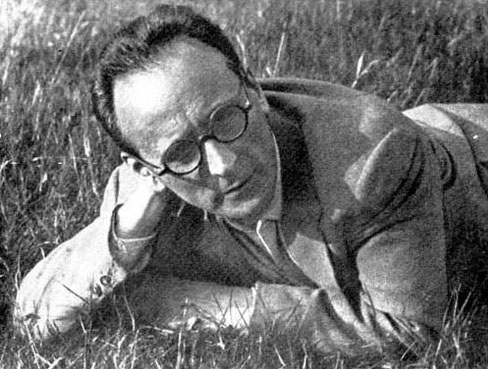

 |
The Twelve Tone Method In order to assert order on the presumed anythin-goes chaos the atonality, Schoenberg developed what came to be known as the twelve-tone method. This method can be considered as a chromatic analogue to tonal functional harmony, this is to say, a way of incorporating new dissonant melodic and chord structures within a conscious and systematic order. The basic principles are simple. Each compositon creates for itself a unique sequence of the twelve chromatic pitches, known as the row. In addition to the original (prime) form of the row, there are also three other forms derived by thematic transformation: the inversion(I): essentially the row is turned upside-down, retrograde (R): the row backward, and retrograde inversion(RI): backward and upside-down. These terms have the same meaning that they had in fugue. In addition to these forms, as with a scale, the composer can transpose the row or its other forms to any of the twelve chromatic pitches and maintain the integrity of the row. While the row determines the succession of pitches in a work, it does not prescribe rhythms, textures or forms. In a way the row can be considered as an abstract structure, a set of potential relationships that must be embedded in a particular compositon. Contrary to Schoenberg's use of the row, Webern tends to treat the row more as the "soul" of the work than as a "theme." Conseqeuntly, we never hear the row clearly in the work - it is instead buried within the contrapuntal texture: at times divided between instruments, at times heard in simultanieties. |
|
What to Listen for One technique which Webern pioneered is particularly evident in this work: klangfarbenmelodie, or tone-color melody. In klangfarbenmelodie, the melody is "passed off" from one instrument to another. For instance if "Happy Birthday" were played orchestrated using klangfarbenmelodie, the first two notes might be taken by a trumpet, the third and fourth by a flute, and the five, sixth, seventh and eighth by a violin. Webern uses this technique most clearly in his orchestration of the Ricercare of Bach's Musical Offering Webern's Symphony is in two movements and uses symmetry as its guiding force. The row is symmetrical: its final six pitches are a transposed retrograde of its first six pitches. Similarly, many of the vertical relations contain mirror symmetry (the intervallic content of the upper half of the chord is mirrored in the lower half of the chord) and some sections are in effect palindromes - reflecting around a central point. Both movements contain complex canons. The first is in a binary form with internal retrogrades of large sections, while the second proceeds as a theme with seven variations and a coda. Webern was clearly proud of his accomplishments. He writes of the Symphony in a 1932 lecture: "Greater unity is impossible. Even the Netherlanders didn't manage it. In the fourth variation there are constant mirroring. This variation is itself the midpoint of the whole movement, after which everything goes backwards. So the entire movement is itself a double canon by retrograde motion! Now I must say this: what you see here ... - constantly the same thing - isn't to be regarded as a "tour de force"; that would be ludicrous. I was to create as many connections as possible, and you must allow that there are indeed many connections here! Finally I must point out to you that this is so not only in music. We find an analogy in language. I was delighted to find that such connections also often occur in Shakespeare, in alliteration and assonance. He even turns a phrase backwards. Karl Kraus' handling of language is also based on this: unity also has to be created here, since it enhances comprehensibility." Rest assured, the structure and row usage is difficult to hear with the naked ear. While one can pick up divisions in the work and perhaps central points, it is not the goal of this music for the row to be heard as such. Instead, revel in the mobile-like sounds and the evocative textures. Those interested in learning more about the technical details of the piece are encouraged to consult Kathryn Bailey's The Twelve-note music of Anton Webern. |
|
All text © Todd Tarantino 2002-2012. Not to be reprinted without permission. www.toddtarantino.com Contact |